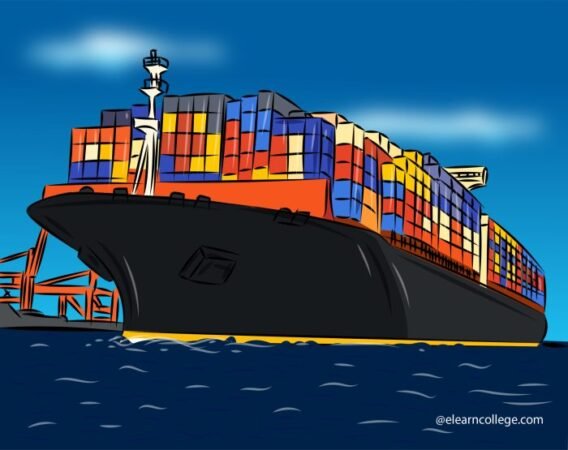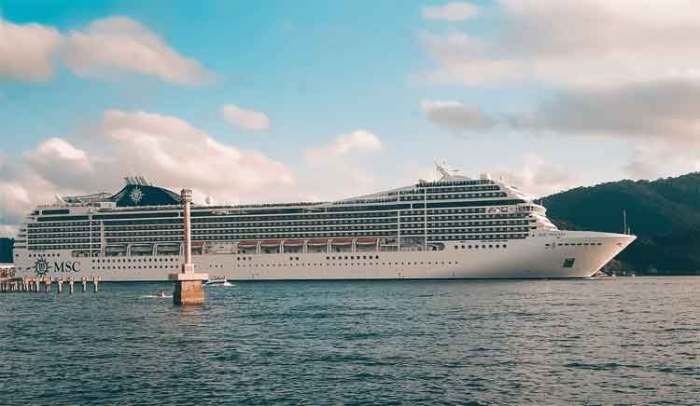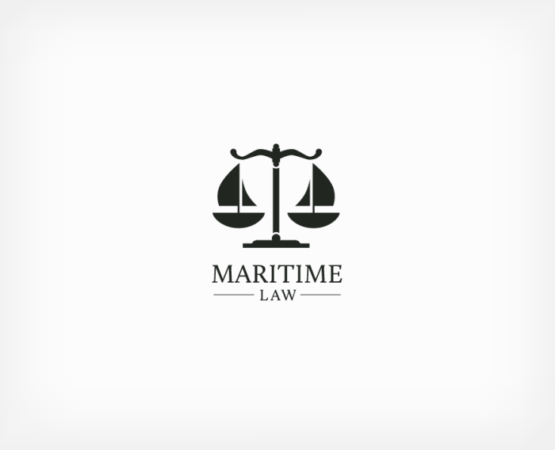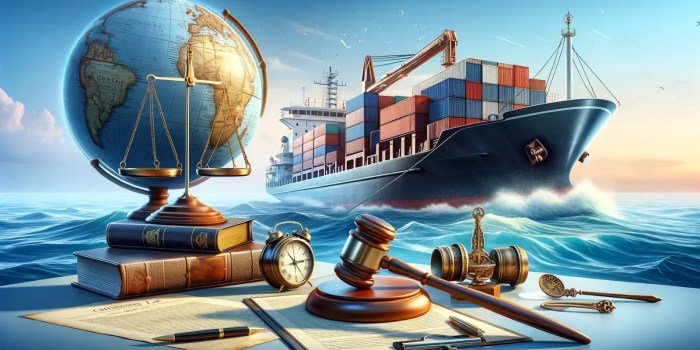
Navigating the complex world of maritime law can feel like charting a course through uncharted waters. This dictionary serves as your essential guide, unraveling the intricacies of this specialized legal field. From historical precedents to modern challenges, we explore the key principles, sources, and applications of maritime law, offering a clear and concise understanding of its multifaceted nature. Prepare to delve into a world where centuries of tradition meet the cutting edge of global trade and technological advancement.
This comprehensive resource aims to demystify maritime law, providing definitions, explanations, and examples to illuminate this often-overlooked yet critically important area of jurisprudence. We will explore the key legal concepts, examine relevant case law, and consider the impact of evolving international regulations and technological innovations. Whether you’re a seasoned maritime professional or a curious newcomer, this guide offers valuable insights into the rules and regulations governing the world’s oceans.
Defining Maritime Law
Maritime law, also known as admiralty law, is the body of law that governs maritime activities, including shipping, navigation, and commerce at sea. It’s a complex and specialized area of law with a long and rich history, drawing from international treaties, national statutes, and centuries of judicial precedent.
Historical Evolution of Maritime Law
Maritime law’s origins trace back to ancient civilizations, with evidence of codified maritime regulations appearing in ancient Greece and Rome. The Rhodian Sea Law, dating back to the 3rd century BC, is considered a foundational text, influencing subsequent legal developments. Medieval European maritime codes, such as the Consolato del Mare, further shaped the field. The growth of international trade and exploration during the Age of Discovery spurred the development of more comprehensive legal frameworks. The 18th and 19th centuries saw the rise of national maritime codes and the establishment of international conventions aimed at standardizing maritime practices and resolving disputes. Modern maritime law continues to evolve in response to technological advancements, globalization, and environmental concerns.
Comparison of Maritime Law with Other Legal Systems
Maritime law differs significantly from both common law and civil law systems. While it incorporates elements of both, it maintains its own unique character. Common law jurisdictions, like the United States and the United Kingdom, rely heavily on judicial precedent, with court decisions shaping the interpretation and application of maritime law. Civil law jurisdictions, prevalent in many parts of Europe and Latin America, rely more on codified statutes. However, maritime law, regardless of the overarching national legal system, often draws upon international conventions and treaties, creating a degree of uniformity across jurisdictions. This international dimension sets it apart from purely domestic legal systems. Furthermore, the unique nature of maritime activities and the international character of shipping necessitate specialized legal principles not found in other branches of law.
Key Principles Governing Maritime Law
Several core principles underpin maritime law. One key principle is the concept of “maritime lien,” a type of security interest in a vessel or its cargo that arises from a maritime claim, such as unpaid wages or damages from a collision. Another important principle is the concept of “limitation of liability,” which allows shipowners to limit their financial responsibility for certain types of maritime accidents. The concept of “general average,” which requires all parties involved in a voyage to share losses proportionally incurred to save the vessel and cargo, is another crucial principle. Finally, the principle of “salvage” rewards those who rescue vessels or cargo in distress. These principles reflect the unique challenges and risks associated with maritime operations.
Areas of Maritime Law
| Area of Maritime Law | Description | Key Issues | Governing Instruments |
|---|---|---|---|
| Admiralty | The jurisdiction of courts over maritime matters. | Jurisdiction, maritime liens, limitation of liability. | National statutes, international conventions. |
| Shipping | The carriage of goods and passengers by sea. | Contracts of carriage, charter parties, bills of lading. | International conventions (e.g., Hague-Visby Rules), national legislation. |
| Salvage | The rescue of vessels or cargo in distress. | Salvage awards, salvage agreements, duties of salvors. | International conventions (e.g., Salvage Convention), national legislation. |
| Marine Insurance | Protection against maritime risks. | Insurance contracts, coverage, claims. | National legislation, international standards. |
Sources of Maritime Law
Maritime law, a complex and multifaceted field, draws its authority from a variety of sources, reflecting its historical development and global reach. Understanding these sources is crucial to comprehending the legal framework governing maritime activities worldwide. This section will explore the primary sources of maritime law, highlighting their interplay and significance in shaping legal precedents and resolving maritime disputes.
Primary Sources of Maritime Law
Maritime law’s foundation rests on three pillars: statutes, treaties, and customary international law. Statutes are laws passed by national legislatures, reflecting a nation’s specific approach to maritime issues within its jurisdiction. Treaties, on the other hand, represent agreements between nations, establishing common standards and rules for international maritime activities. Customary international law encompasses universally accepted practices and principles that have evolved over time, gaining the force of law through consistent state practice and a belief in their legal obligation. The interplay of these sources, often complex and occasionally conflicting, shapes the legal landscape of the maritime world.
The Role of International Conventions in Maritime Law
International conventions play a vital role in harmonizing maritime law globally. These legally binding agreements, negotiated and ratified by numerous nations, aim to standardize regulations and practices across different jurisdictions. Conventions address various aspects of maritime activity, including safety at sea, pollution prevention, and the carriage of goods by sea. The effectiveness of these conventions hinges on widespread adoption and implementation by participating states. Non-compliance can lead to international pressure and potential sanctions. Significant examples include the International Convention for the Safety of Life at Sea (SOLAS) and the International Convention for the Prevention of Pollution from Ships (MARPOL).
The Influence of Case Law in Shaping Maritime Law
Case law, comprising judicial decisions in maritime disputes, significantly influences the development of maritime law. Courts, particularly those with specialized maritime jurisdiction, interpret statutes, treaties, and customary law, establishing precedents that guide future legal decisions. The reasoning and conclusions reached in these cases clarify ambiguities, fill legal gaps, and contribute to the ongoing evolution of maritime legal principles. The weight given to precedent varies depending on the jurisdiction and the hierarchical structure of the court system.
Examples of Significant Maritime Law Cases and Their Impact
Numerous landmark cases have profoundly shaped maritime law. For instance, *The M/V Hellenic Champion* case (1990) provided significant clarity regarding the legal liability of shipowners for pollution caused by their vessels. Similarly, *The Amoco Cadiz* case (1978) highlighted the complexities and challenges of determining liability for large-scale oil spills, influencing subsequent legal developments in environmental protection. These cases, and many others, illustrate the dynamic nature of maritime law and its adaptation to new challenges and technological advancements.
Important International Maritime Organizations and Their Contributions
Several international organizations play a critical role in shaping and promoting maritime law. Their contributions encompass developing international standards, providing technical assistance, and fostering cooperation among nations.
- International Maritime Organization (IMO): The IMO is the United Nations specialized agency responsible for regulating international shipping. It develops and adopts international conventions, codes, and resolutions that govern various aspects of maritime safety, security, and environmental protection.
- International Tribunal for the Law of the Sea (ITLOS): ITLOS is an independent judicial body that adjudicates disputes related to the Law of the Sea Convention (UNCLOS). It plays a crucial role in resolving maritime boundary disputes, clarifying the legal rights and obligations of states, and promoting compliance with international maritime law.
- International Labour Organization (ILO): The ILO develops and promotes international labour standards related to seafarers’ rights, working conditions, and social protection. Its conventions and recommendations aim to ensure fair treatment and decent work for seafarers worldwide.
Key Areas of Maritime Law
Maritime law encompasses a broad range of legal principles and practices governing activities at sea and on navigable waters. This section delves into several key areas, illustrating the complexity and multifaceted nature of this specialized field.
Law of the Sea
The law of the sea, codified primarily in the United Nations Convention on the Law of the Sea (UNCLOS), defines the rights and responsibilities of nations regarding the use of the world’s oceans. It establishes various maritime zones, each with distinct legal regimes. Territorial waters extend up to 12 nautical miles from a nation’s baseline, within which the coastal state exercises sovereignty, similar to its land territory. Beyond territorial waters lies the contiguous zone, extending up to 24 nautical miles, where a coastal state can enforce customs, fiscal, immigration, and sanitary laws. The exclusive economic zone (EEZ) extends up to 200 nautical miles from the baseline, granting the coastal state sovereign rights over the exploration and exploitation of natural resources, including fish stocks and minerals. Beyond the EEZ lies the high seas, governed by the principle of freedom of the seas, subject to international law. Disputes regarding maritime boundaries are frequently addressed through international arbitration or judicial processes Artikeld in UNCLOS.
Maritime Contracts
Maritime commerce relies heavily on various contracts, each with specific legal implications. Charter parties, for example, are contracts governing the hiring of a vessel. Different types of charter parties exist, such as time charters (where the charterer hires the vessel for a specific period) and voyage charters (where the charterer hires the vessel for a single voyage). Bills of lading are documents of title issued by a carrier to acknowledge receipt of goods for shipment. They serve as evidence of the contract of carriage and are crucial in determining liability in case of loss or damage to cargo. The terms and conditions within these contracts, often standardized through industry-wide clauses, are subject to legal interpretation and dispute resolution. For example, a common clause in a charter party may address the allocation of responsibility for delays due to adverse weather conditions.
Marine Insurance
Marine insurance plays a vital role in mitigating the risks associated with maritime activities. It provides coverage for various perils, including loss or damage to vessels, cargo, and liability to third parties. Policies are often tailored to specific risks and circumstances, reflecting the unique nature of maritime ventures. Insurers assess risks based on factors such as the type of vessel, the cargo being transported, the voyage route, and the historical claims record of the insured. In the event of a loss, the insured party must comply with the terms of the policy and provide evidence of the loss to claim indemnity. A major example of a marine insurance claim might involve a cargo ship encountering a severe storm resulting in significant damage to the goods onboard. The policy would Artikel the procedure for the insured to file a claim and provide documentation supporting their claim.
Resolving Maritime Disputes
Maritime disputes can arise from various sources, including breaches of contract, collisions, salvage operations, and cargo damage. Several mechanisms exist for resolving these disputes, often incorporating specialized procedures and expertise. Arbitration is frequently employed, offering a quicker and more cost-effective alternative to litigation. Many maritime contracts contain arbitration clauses specifying the rules and procedures to be followed. Litigation in national courts may also be necessary, particularly when jurisdiction is disputed or when arbitration is not applicable. International maritime organizations, such as the International Maritime Organization (IMO), play a role in establishing standards and facilitating dispute resolution mechanisms. Furthermore, specialized maritime courts or tribunals exist in many countries, possessing expertise in maritime law and procedures.
Maritime Claim Process
[Flowchart Description] The flowchart would begin with the initiation of a maritime claim, perhaps due to cargo damage. This would lead to a box detailing the investigation phase, gathering evidence like the bill of lading, survey reports, and witness testimonies. The next step would be the pre-litigation phase, involving attempts at negotiation and settlement between the parties. If this fails, the claimant would file a formal claim, likely through arbitration or a maritime court. The court or arbitration panel would then hear the evidence and arguments from both sides. This would be followed by a decision, potentially including an award of damages to the successful party. Finally, the enforcement phase would see the successful party attempting to recover the awarded damages. The flowchart would visually represent this process using boxes and arrows, illustrating the sequence of events.
Maritime Jurisdiction and Enforcement
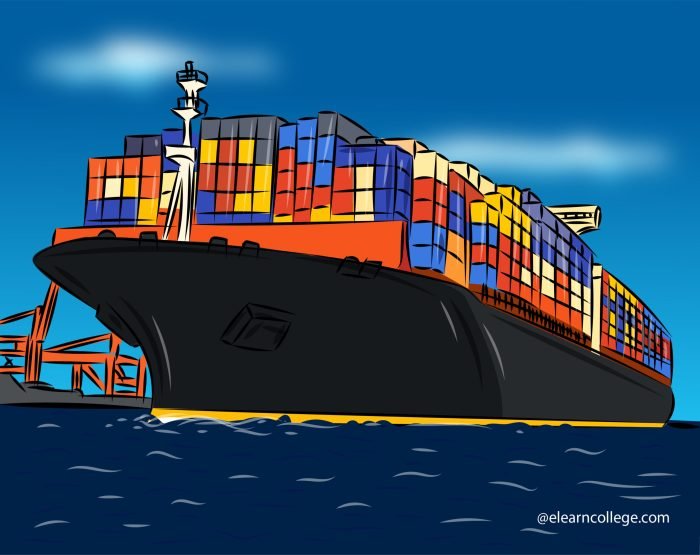
Maritime jurisdiction and enforcement are crucial aspects of maritime law, ensuring compliance with international regulations and the protection of maritime interests. The complexities of jurisdiction arise from the nature of the sea as a shared global space, necessitating a clear understanding of the legal authorities involved and the mechanisms for resolving disputes.
Criteria for Determining Maritime Jurisdiction
Determining maritime jurisdiction involves a multifaceted approach, considering several key factors. A state’s jurisdiction extends to its territorial waters, typically 12 nautical miles from the baseline. Beyond this, the concept of exclusive economic zones (EEZs), extending up to 200 nautical miles, grants coastal states sovereign rights over resources like fish and minerals. However, the high seas, beyond EEZs, remain subject to international law, with jurisdiction primarily resting on the flag state of a vessel. Other jurisdictional considerations include the nationality of individuals involved in maritime incidents, the location of the incident, and the type of offense committed. Crimes committed onboard a vessel may fall under the jurisdiction of the flag state, while those impacting the coastal state’s environment or security might fall under the port state’s jurisdiction.
The Roles of Flag States and Port States in Enforcing Maritime Law
Flag states, the states under whose flag a vessel is registered, bear primary responsibility for enforcing maritime law on their vessels. This includes ensuring the vessel complies with safety regulations, preventing pollution, and prosecuting crimes committed onboard. Port states, where vessels call, also have jurisdiction to enforce certain laws, particularly those related to safety, security, and environmental protection within their ports and territorial waters. This often involves inspections and potential sanctions for non-compliance. The balance between flag state and port state control is a complex area, with international conventions aiming to harmonize approaches and prevent conflicts.
Methods of Dispute Resolution in Maritime Law
Maritime disputes can be resolved through various methods, each with its own advantages and disadvantages. Litigation, involving court proceedings, offers a formal and legally binding resolution but can be time-consuming and expensive. Arbitration, a private process involving a neutral arbitrator, offers a more flexible and potentially faster resolution, often preferred for its confidentiality and specialized expertise in maritime matters. Mediation, a less formal process involving a neutral facilitator, can help parties reach a mutually agreeable settlement. The choice of dispute resolution method often depends on the nature of the dispute, the preferences of the parties involved, and the relevant contractual agreements.
Examples of International Cooperation in Maritime Law Enforcement
International cooperation is essential for effective maritime law enforcement, given the global nature of maritime activities. Organizations like the International Maritime Organization (IMO) develop and promote international standards, while regional agreements, such as those within the European Union, enhance cooperation among neighboring states. Joint patrols and information sharing between coastal states are common practices to combat piracy, smuggling, and other transnational maritime crimes. International treaties, such as the United Nations Convention on the Law of the Sea (UNCLOS), provide the legal framework for this cooperation, outlining the rights and responsibilities of states in maritime matters.
Types of Maritime Offenses and Their Penalties
| Offense | Penalty (Examples) | Jurisdiction | International Conventions |
|---|---|---|---|
| Piracy | Imprisonment, fines, asset forfeiture | Flag state, port state, potentially universal jurisdiction | UNCLOS |
| Smuggling (drugs, weapons) | Imprisonment, fines, asset forfeiture | Port state, flag state | Various international drug and arms control treaties |
| Marine pollution | Fines, imprisonment, compensation for damages | Flag state, port state | MARPOL |
| Illegal fishing | Fines, vessel seizure, imprisonment | Flag state, coastal state | UN Fish Stocks Agreement |
Modern Challenges in Maritime Law

The rapid evolution of global trade, technological advancements, and environmental concerns presents maritime law with unprecedented challenges. This section explores some of the key issues shaping the future of this complex legal field. Navigating these challenges requires international cooperation and innovative legal frameworks.
Globalization’s Impact on Maritime Law
Globalization has profoundly impacted maritime law, increasing the complexity of jurisdictional issues, contract enforcement, and the harmonization of regulations across diverse legal systems. The sheer volume of international trade transported by sea necessitates consistent and predictable legal frameworks. Differences in national laws regarding liability, safety standards, and environmental regulations create significant hurdles for businesses operating in the global maritime industry. This necessitates greater international cooperation and the development of uniform legal standards, such as those promoted by the International Maritime Organization (IMO). The increasing use of flags of convenience, where vessels register under a flag of a state other than their owner’s, further complicates jurisdictional matters and enforcement of regulations.
Challenges Posed by Piracy and Maritime Terrorism
Piracy and maritime terrorism represent significant threats to the safety and security of seafarers and maritime commerce. These acts of violence disrupt trade routes, damage property, and endanger lives. International efforts to combat these threats include enhanced security measures, improved information sharing among nations, and increased naval patrols in high-risk areas. The legal framework for addressing piracy and terrorism at sea involves a complex interplay of international law, national legislation, and regional agreements. Challenges include the effective prosecution of perpetrators, ensuring consistent application of international law across different jurisdictions, and dealing with the issue of jurisdictional disputes in international waters.
Legal Implications of Environmental Protection in Maritime Contexts
The maritime industry’s environmental impact is substantial, with concerns ranging from oil spills to ballast water discharge and greenhouse gas emissions. International conventions, such as MARPOL (International Convention for the Prevention of Pollution from Ships), aim to regulate these impacts. However, enforcement remains a challenge, particularly in international waters. The legal implications extend to liability for environmental damage, the development of stricter environmental standards, and the implementation of effective monitoring and enforcement mechanisms. Recent cases involving large-scale oil spills highlight the need for robust legal frameworks to address environmental damage and hold responsible parties accountable. Further, the growing awareness of the impact of shipping on climate change is leading to discussions on carbon regulations and the potential for carbon taxes or emissions trading schemes within the maritime sector.
Technology’s Role in Maritime Law: Autonomous Vessels
The emergence of autonomous vessels (also known as unmanned surface vessels or USVs) presents novel legal challenges. Questions of liability in the event of accidents, the application of existing collision regulations, and the determination of responsibility for operational decisions made by artificial intelligence systems require careful consideration. Existing maritime law may not adequately address these situations, necessitating the development of new legal frameworks and international guidelines. The potential benefits of autonomous vessels – improved safety, efficiency, and reduced operational costs – are considerable, but the legal uncertainties need to be resolved to facilitate their widespread adoption.
Emerging Issues in Maritime Law and Potential Solutions
The following emerging issues require attention and innovative solutions:
- Cybersecurity threats to maritime operations: The increasing reliance on technology in shipping exposes the industry to cyberattacks, potentially leading to disruptions in navigation, communication, and cargo handling. Solutions include enhancing cybersecurity protocols, developing international standards for maritime cybersecurity, and strengthening legal frameworks to address cybercrime in the maritime domain.
- Deep seabed mining: The exploration and exploitation of mineral resources from the deep seabed raise environmental concerns and complex jurisdictional issues. International legal frameworks need to be developed to regulate this activity, ensuring environmental protection and equitable sharing of benefits.
- The legal status of Arctic shipping: Melting Arctic ice opens up new shipping routes, but also raises challenges related to environmental protection, navigational safety, and the application of existing legal frameworks in this unique environment. International cooperation is crucial to establish clear rules and regulations for Arctic shipping.
Illustrative Examples
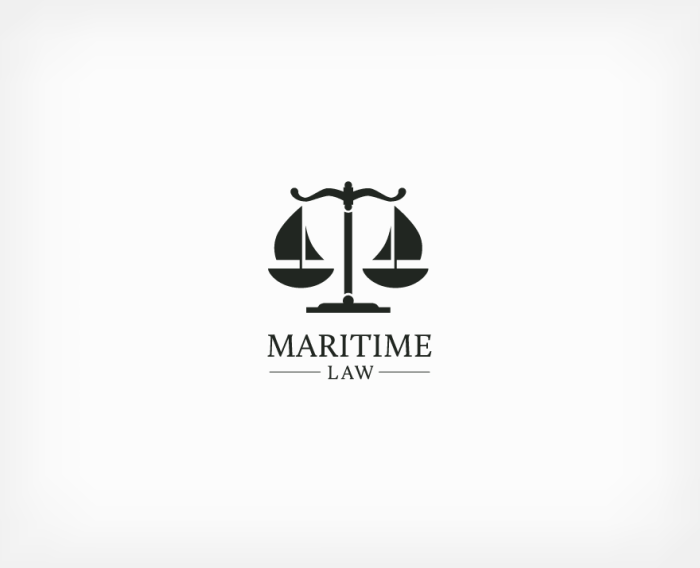
Understanding maritime law is best achieved through practical application. The following scenarios illustrate key principles and their legal implications within the maritime context.
Collision at Sea
Imagine two vessels, the “Oceanic Star” and the “Sea Serpent,” collide in international waters during a dense fog. The “Oceanic Star,” a large container ship, claims the “Sea Serpent,” a smaller fishing trawler, failed to maintain a proper lookout and was at fault for the collision. The “Sea Serpent” counters that the “Oceanic Star” was traveling at excessive speed given the poor visibility. Legal implications include determining liability for damages (hull repairs, lost cargo, potential injuries). This involves investigating both vessels’ actions, reviewing navigational logs, and potentially expert witness testimony regarding seamanship practices and adherence to the International Regulations for Preventing Collisions at Sea (COLREGs). The court would analyze evidence to determine which vessel, if either, was negligent and apportion liability accordingly. Compensation would be awarded based on the established degree of fault.
Cargo Damage During Shipment
A shipment of delicate electronics from Japan to the United States aboard the “Global Trader” suffers significant damage due to improper handling and inadequate stowage during transit. The consignee, a major electronics retailer, claims against the carrier for breach of contract and negligence. The carrier, in turn, might argue that the damage was caused by inherent vice of the goods (e.g., pre-existing defects) or an act of God (e.g., unforeseen severe weather). Legal implications center on the carrier’s duty of care under the relevant carriage of goods by sea contract (likely a bill of lading governed by the Hague-Visby Rules or similar conventions). The court will examine the bill of lading’s terms, the handling procedures used, and the condition of the goods both at the time of shipment and upon arrival. The burden of proof often rests on the carrier to demonstrate they exercised due diligence in preventing the damage. The outcome would involve determining liability and calculating compensation for the damaged goods.
Maritime Salvage Operation
The “Arctic Voyager,” a cruise ship, encounters severe engine trouble and loses propulsion in a remote area of the North Atlantic. A specialized salvage tug, the “Rescue Titan,” responds to the distress call, successfully towing the disabled cruise ship to a safe port. Legal implications involve the entitlement of the “Rescue Titan” to salvage remuneration. The amount awarded is determined by various factors, including the value of the salvaged property (the “Arctic Voyager” and its cargo/passengers), the risk undertaken by the “Rescue Titan,” the skill and expertise employed, and the success achieved. The salvage award is typically based on the “No Cure, No Pay” principle, meaning the salvor only receives payment if the salvage operation is successful. However, the salvor might also be entitled to expenses incurred during the operation. The legal framework governing salvage is generally based on international conventions and national laws, ensuring fair compensation for successful salvage efforts.
Types of Maritime Insurance Policies
Hull and Machinery Insurance
This policy covers the physical damage to a vessel, including its engines, machinery, and other equipment. It protects against risks like collisions, grounding, fire, and other perils of the sea. Coverage can be extended to include liabilities arising from damage caused by the vessel to other property. The policy typically includes clauses specifying exclusions and limitations of liability.
Cargo Insurance
This policy protects the cargo owner against loss or damage to goods during transit by sea. Different types of cargo insurance exist, ranging from basic coverage (e.g., Institute Cargo Clauses C) to more comprehensive coverage (e.g., Institute Cargo Clauses A). The policy specifies the covered risks, the insured value of the goods, and the terms of the coverage. Claims are typically made upon proof of loss or damage to the goods.
Protection and Indemnity (P&I) Insurance
This type of insurance covers a shipowner’s liabilities to third parties arising from various maritime risks, such as collision liability, cargo damage liability (beyond what is covered by the hull and cargo policies), and pollution liability. It also provides coverage for legal expenses incurred in defending against claims. P&I insurance is essential for shipowners to mitigate significant financial risks associated with maritime operations.
Last Point
Understanding maritime law is crucial in today’s interconnected world, where global trade and maritime activity are paramount. This dictionary has provided a foundational understanding of the key principles, sources, and applications of this specialized legal field. From the historical evolution of maritime law to the modern challenges posed by globalization and technological advancements, we have explored the complexities and nuances of this dynamic area of jurisprudence. By grasping the fundamental concepts Artikeld here, individuals can better navigate the legal landscape of maritime activities, fostering safer, more efficient, and sustainable practices on the world’s oceans.
Common Queries
What is the difference between maritime law and admiralty law?
While often used interchangeably, admiralty law is a branch *of* maritime law. Maritime law encompasses a broader scope, including aspects like coastal state jurisdiction, while admiralty law focuses specifically on the legal processes and remedies related to maritime commerce and navigation.
How is maritime law enforced internationally?
International enforcement relies on a combination of national legislation, international treaties (like UNCLOS), and collaborative efforts between flag states (the country where a vessel is registered) and port states (countries where vessels call).
What are some common maritime disputes?
Common disputes include cargo damage, collisions at sea, charter party breaches, salvage claims, and personal injury claims.
Where can I find more detailed information on specific maritime law topics?
Specialized legal journals, maritime law textbooks, and online legal databases provide in-depth information on specific areas of maritime law.
